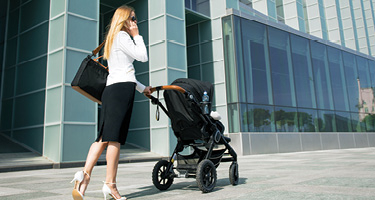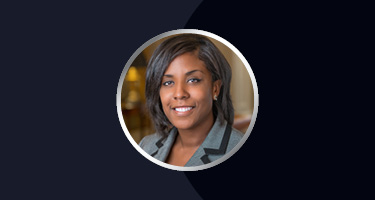Until the Sex Disqualification (Removal) Act 1919 women were not allowed to become solicitors, despite the efforts of campaigners. These included Gwyneth Bebb, who in 1913 unsuccessfully sued the Law Society of England of Wales in a bid to be able to take the exams to join the profession.
Three years after Parliament passed the Act, in December 1922 Carrie Morrison became the first woman to be admitted as a solicitor in England.
In the last 100 years, better educational opportunities and other societal changes have seen the number of female solicitors grow. Since 1990 they have made up more than 60 percent of new entrants and there are now more women than men practicing as solicitors.
But women still face obstacles and the higher up the profession you go, the fewer there are. Women make up only 33 percent of partners and, until the last year, were a rarity at the top of elite international city law firms. In the past 12 months, Freshfields Bruckhaus Deringer, Herbert Smith Freehills and Linklaters have elected senior female leaders.
In the smaller, barristers’ side of the profession, the picture is similar. Women are entering the profession in equal numbers to men, and they make up 38 percent of the bar. But obstacles to career progression mean that only 16 percent of Queen’s Counsel are women.
The problem is not attracting women to become solicitors or barristers but keeping them and enabling them to progress to the highest ranks. Despite the slow rate of progress at the top, most are reluctant to countenance the idea of positive discrimination.
Quotas, says Shirley Hall, senior office partner at Eversheds Sutherland in Edinburgh and Newcastle, “run the risk that of becoming a tick box exercise without proper investment in the individual.”
She adds: “Personally I wouldn’t want to be promoted because I was a woman. I’d want to be promoted on merit because my talent had been recognised.”
But to drive positive change, numerous law firms and barristers’ chambers have signed the Women in Law pledge, to commit to creating a more equal legal profession by setting targets to improve diversity.
The increased number of women lawyers has provided important role models to encourage younger female lawyers into the profession. While the overt sexism that was common in the 1960s and 1970s when there were fewer women lawyers is a thing of the past, bias is still present due to the structure and inflexible working conditions that prevail.
"At this juncture, sometimes women feel as though they have to make a choice – will they prioritise their career, or their family?”
Women are often still channelled into certain types of law that are perceived as more suitable, like family law, rather than commercial areas of practice and are often still paid less than their male counterparts. They can find it harder to build their practices or professional networks because of unfair work allocation.
One of the biggest problems for females come when they want to have a family and combine the demands of a busy legal practice with children.
For solicitors, says Sara Burns, a partner in the medical negligence team at Irwin Mitchell in Birmingham, this dilemma often arises 7 or 8 years after qualification and can coincide with the time they are looking for partnership. “At this juncture, sometimes women feel as though they have to make a choice – will they prioritise their career, or their family?” she says.
In some areas of work, where the rates of pay are significantly lower than in other fields, the difficulties combining work and family are particularly acute.
“Crime is very unfriendly to women,” says Sally Harrison QC, a barrister at St John’s Building in Manchester.
It is not just the long and unpredictable hours and the need to travel to and be at court, but the lower income makes it harder to be able to afford childcare or take time off. The attrition rate for women is so high, says Harrison, because it is “too complicated logistically.” She condemns the government’s plans to allow crown court judges to sit for longer – from 9 a.m. to 6 p.m., instead of 10 a.m. to 4 p.m., because of the disproportionate impact it will have on women, and potentially drive them out.
“How on earth are you meant to juggle a nursery with early and later sitting? People want to see their children, especially after lockdown when people have been able to spend more time with them,” she says.
"Organisations should have proper structured conversations about career development at an early stage so that sufficient thought can be given to what opportunities are available, what the individual would like to do and ensure that there is a good coaching and mentoring system in place to encourage the development of women.”
More generally, she says, when women are pregnant, people see them differently and it affects the work you get. Then when you return form maternity leave, you have to work to re-establish your practice, as well as taking care of young children. The responsibility for change, says Ms Burns, lies with the whole profession – to change, adapt and recognise the positive impact of encouraging and enabling women to advance in the profession.
“The development of flexible working has really made a huge difference to how and where we work, and although I don’t believe you can ‘have it all’, you can work flexibly in order to meet the demands of both work and family life,” she says.
But, for that to work, you need to have the right support from your firm or chambers.
“Organisations should have proper structured conversations about career development at an early stage so that sufficient thought can be given to what opportunities are available, what the individual would like to do and ensure that there is a good coaching and mentoring system in place to encourage the development of women,” says Hall.
A crucial driver of change, she states, is increasing the number of women in the boardroom and at the most senior levels in the organisation – as well as having “male supporters” in senior posts.
Catherine Baksi is a barrister turned freelance legal affairs journalist, writing for a range of publications, including The Times, The Guardian and the Law Society Gazette. She has appeared on Sky News commenting on breaking stories and provided analysis for radio. In 2016 she won the Halsbury Legal Awards journalism award and was has been nominated for the Bar Council’s legal reporting award.
































